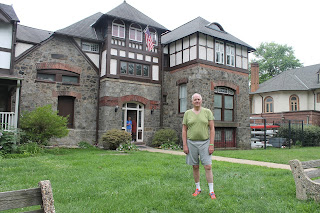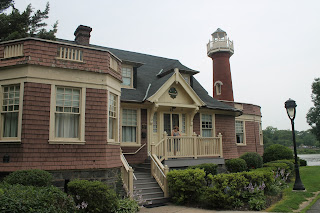Panegyric
for Lencho, my departing companion
Many of you know by now, that Lencho, my loyal companion and good
friend of 15 years, passed away last week.
More than grief, I feel overwhelmed by a mixture of gratitude, accomplishment,
and bewilderment.
For the last four years, I have been in the habit of taking out
Lencho and Remy, both Golden Retrievers, for both an early morning as well as
an afternoon 20 minute stroll. Or would it be more proper to say, "they
took me out"?
Lencho was a smart dog. He protected me from animals, from
strangers, from dangerous situations.
Why did God include dogs in His
Creation?
I profess a religion according to which
an itinerant 1st Century Jew from Galilee is the Son of God, Creator of Heaven
and Earth. This Jew showed a particular interest in animals, especially
donkeys, lambs, fish and birds. We refer to Him, to Jesus, as the Agnus Dei, or Lamb of God.
Almost a half a century ago, as a
freshman in College, when I was studying Philosophy in Roma, a term became something of a catchword in intellectual circles: anthropomorphism, that is, our tendency, throughout history, to attribute human
traits to beings not-human. As Anthropology studied the history of religion, we have seen repeated incidences of anthropomorphism. A well known case, was Isis in the Mythology of Egypt, the great magician, who disguises her son Horus, as a Hawk, to protect him from his wicked uncle Seth.
Indeed, if anthropomorphism is a potential trap that all of us animal-lovers have, isn't our irresponsiveness to the goodness of our pets even a more treacherous peril? Perhaps it becomes us humans to indulge in our sentimentality, rather than to fall into the other extreme of stoic insensibility.
Isis, mother of Horus, the Divine Hawk
Indeed, if anthropomorphism is a potential trap that all of us animal-lovers have, isn't our irresponsiveness to the goodness of our pets even a more treacherous peril? Perhaps it becomes us humans to indulge in our sentimentality, rather than to fall into the other extreme of stoic insensibility.
Over these last 15 years, Lencho has not
only been a model dog, but a model mammal. So many times, people have remarked
to me “He is almost like a human:” I
wonder if Lencho would like that remark if he understood it.
In 15 years, I never saw Lencho show disrespect towards my wife or towards me. Lencho dirtied the floor of my bedroom the first day he came to live in my house. I hit him on his rump with a newspaper, and took him out to the garden, and said: “Here!”. Then I took him out for a walk. He never dirtied the house again, and he never dirtied his garden with bowel movements. If he had to get up and relieve himself, he would bark until we open the kitchen door and let him out.
He was always polite and well mannered, many times waiting for me to invite him to come into the house, instead of barging in on his own accord. Lencho clearly admonished me when he considered whatever activity I was doing might prove harmful or injurious to me. Sometimes when I climbed up a ladder, or did too much exercise, or jumped over a high fence, he would bark at me until I stopped.
In 15 years, I never saw Lencho show disrespect towards my wife or towards me. Lencho dirtied the floor of my bedroom the first day he came to live in my house. I hit him on his rump with a newspaper, and took him out to the garden, and said: “Here!”. Then I took him out for a walk. He never dirtied the house again, and he never dirtied his garden with bowel movements. If he had to get up and relieve himself, he would bark until we open the kitchen door and let him out.
He was always polite and well mannered, many times waiting for me to invite him to come into the house, instead of barging in on his own accord. Lencho clearly admonished me when he considered whatever activity I was doing might prove harmful or injurious to me. Sometimes when I climbed up a ladder, or did too much exercise, or jumped over a high fence, he would bark at me until I stopped.
When I would take him out to the park,
before he ran off and starting enjoying the day, he would turn around, and in a
jest of gratitude, jumped up and gave me a quick hug.
So in what sense are humans superior to
dogs? In our capability to wage war, our
ability to inflict acts of premeditated cruelity, our indifference to the pain
of those who suffer pain or hunger, as we witness it in indifference.
I saw how my dogs showed modesty when
making bowel movements in a public place, during away from passersby. Dogs fights
never have the aim of destroying the enemy,
or causing permanent wounds, but of simply clearing up a question of
authority, territory, and domain.
I often wondered if dogs were in fact
the embodiment of our Guardian Angels.
Lencho survived cancer. Yet in spite of
his ill health as he became older, and his obviously reduced
mobility, he still savored his daily strolls.
How do we humans contend with the death
of our love ones? In a feeble way.
We go to a wake, then a funeral. We Catholics have a Mass said in honor of the deceased. In some countries, we have a Novenario, or Novena of 9 Masses. Sometimes, instead of nine days with 9 Masses, we pray nine Rosaries for the eternal rest of the soul of the departed. My Jewish neighbor cleared all the furniture from her living room and dining room, and set down low cushions, for all her friends to come visit her when her husband passed away. I felt very much at home, and it felt very similar to a Catholic wake.
Doubtlessly, we cling to our folklore, in the feeble intent to deal with the final inexplicable chapter of this saga we call life. But in the end, we just beg the question. “I come to pay my respects” is what we say to our friends at these occasions. But what do these words really mean? What are we showing respect for? For a corpse with no more life, or for a relationship that is immortal, and whose memory lives on eternally in our minds and in our souls.
We go to a wake, then a funeral. We Catholics have a Mass said in honor of the deceased. In some countries, we have a Novenario, or Novena of 9 Masses. Sometimes, instead of nine days with 9 Masses, we pray nine Rosaries for the eternal rest of the soul of the departed. My Jewish neighbor cleared all the furniture from her living room and dining room, and set down low cushions, for all her friends to come visit her when her husband passed away. I felt very much at home, and it felt very similar to a Catholic wake.
Doubtlessly, we cling to our folklore, in the feeble intent to deal with the final inexplicable chapter of this saga we call life. But in the end, we just beg the question. “I come to pay my respects” is what we say to our friends at these occasions. But what do these words really mean? What are we showing respect for? For a corpse with no more life, or for a relationship that is immortal, and whose memory lives on eternally in our minds and in our souls.
Our veterinarian asked us if we want
Lencho to be cremated or to have his ashes. We declined. It seemed somewhat of
a fetish. But on the other hand, I
salute my brave and noble pet, and thank him for all the wonderful moments we
spent together.
Lencho walks down this new road, but this time he goes alone.




























































